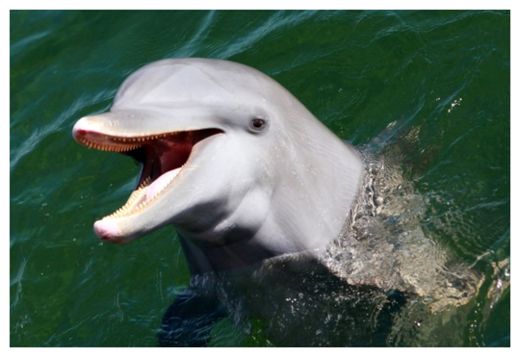
© anyamuse/Shutterstock
Dolphins have previously shown the ability to perform simple math, rescue people and even spot mines for the military. A new study from British researchers shows that the marine mammals are capable of doing something else once thought to be unique to humans - call each other by name.
According to the
new study published in the
Proceedings of the National Academy of Sciences, individual dolphins have a signature whistle that they use to identify themselves and each other.
Marine biologists had previously suspected that individual dolphins have a unique name, but the new study from scientists at the University of St. Andrew found that dolphins respond to hearing their identifier by repeating it back, as if to say, "I'm here!"
"If we look at complex ability in communication in human language, one of the key features that is important to us is that we can copy sounds, we can invent new sounds," study co-author
Vincent Janik, a biologist at St Andrews University,
told The Guardian. "We can then use those sounds and attach some kind of meaning to them and use them to refer to objects and to refer to external things in the world."
Dolphins make a wide range of noises for a multitude of purposes - including for mating or echolocation. However, Janik said the signature whistles are most often used when large groups of dolphins meet out in the open waters.
"Other contexts are particularly when groups meet at sea, they exchange information about who is present before the groups join, almost like a greeting," said Janik. "You also often find them between mums and calves if they get separated."
The researchers said they were experimenting to see the extent to which dolphins were using their vocalization skills for identification purposes.
To reach their findings, the UK team observed a population of between 150 and 180 dolphins living off the eastern coast of Scotland. Individual dolphin's signature whistles were identified and recorded. Signature whistles were then played back to an entire group of around 20 dolphins. The researchers digitally altered the dolphin voices to keep the animals from hearing a familiar voice, While still being able to distinguish the whistle.
"The way you see who is responding is to listen for the signature whistle to see if the animal produces its own whistle back to you when you play its whistle," Janik said.
In addition to whistling their own signatures back, the dolphins often turned their attention to the researchers' boat after hearing the call.
"The interesting thing about these is that they are not voice recognition," said Janik. "In humans you can have different people say the same word and I'd still be able to tell who's speaking. What we also do is have names, so they are very different call types."
"The dolphins do the same thing, they're developing a completely new call type, a melody or whistle, which is not dependent on their voice features," he added.
The researchers noted that understanding how dolphins use these types of call could help us to understand the development of our own language skills.

some birds do that too.